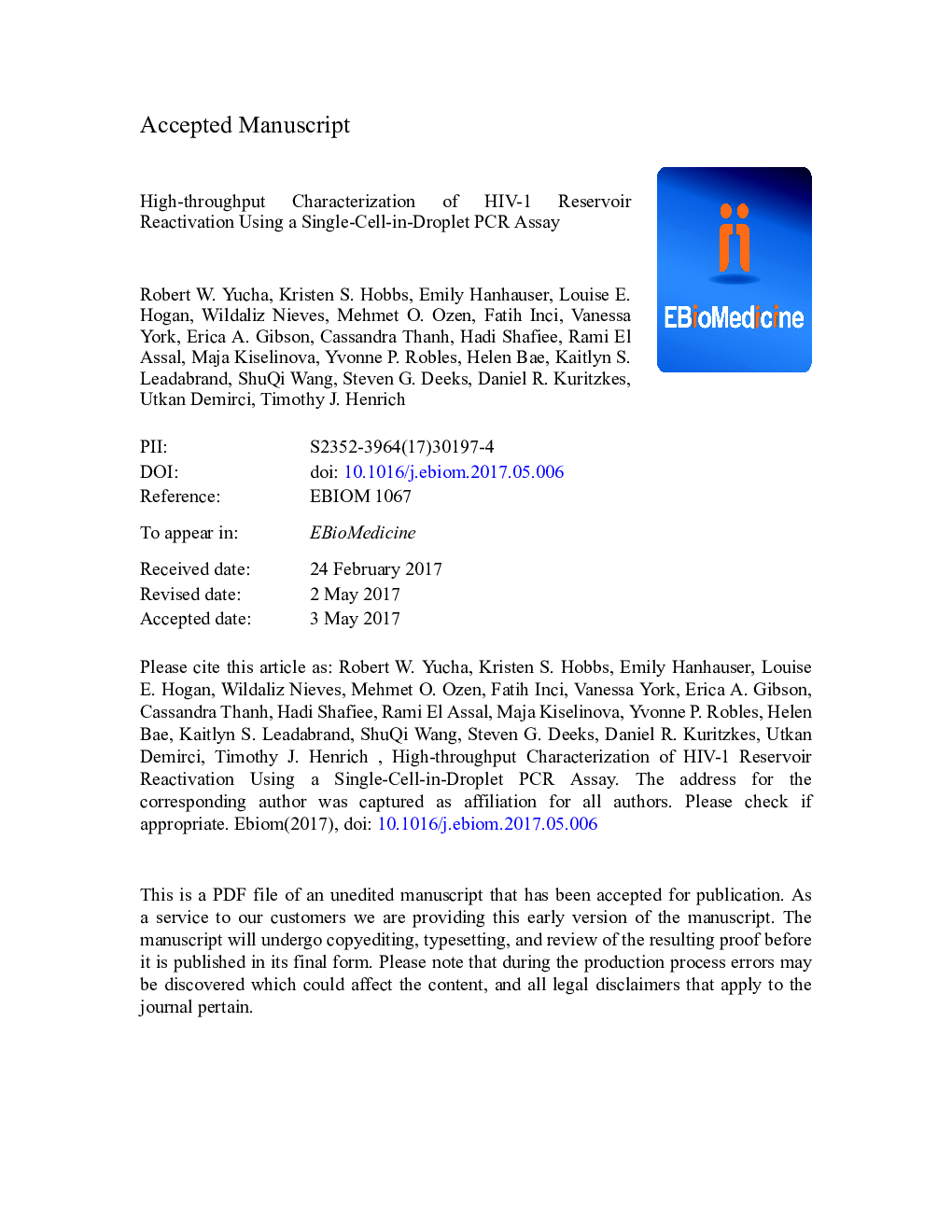| Article ID | Journal | Published Year | Pages | File Type |
|---|---|---|---|---|
| 8438367 | EBioMedicine | 2017 | 46 Pages |
Abstract
Reactivation of latent viral reservoirs is on the forefront of HIV-1 eradication research. However, it is unknown if latency reversing agents (LRAs) increase the level of viral transcription from cells producing HIV RNA or harboring transcriptionally-inactive (latent) infection. We therefore developed a microfluidic single-cell-in-droplet (scd)PCR assay to directly measure the number of CD4+ T cells that produce unspliced (us)RNA and multiply spliced (ms)RNA following ex vivo latency reversal with either an histone deacetylase inhibitor (romidepsin) or T cell receptor (TCR) stimulation. Detection of HIV-1 transcriptional activity can also be performed on hundreds of thousands of CD4Â + T-cells in a single experiment. The scdPCR method was then applied to CD4+ T cells obtained from HIV-1-infected individuals on antiretroviral therapy. Overall, our results suggest that effects of LRAs on HIV-1 reactivation may be heterogeneous-increasing transcription from active cells in some cases and increasing the number of transcriptionally active cells in others. Genomic DNA and human mRNA isolated from HIV-1 reactivated cells could also be detected and quantified from individual cells. As a result, our assay has the potential to provide needed insight into various reservoir eradication strategies.
Related Topics
Life Sciences
Biochemistry, Genetics and Molecular Biology
Cancer Research
Authors
Robert W. Yucha, Kristen S. Hobbs, Emily Hanhauser, Louise E. Hogan, Wildaliz Nieves, Mehmet O. Ozen, Fatih Inci, Vanessa York, Erica A. Gibson, Cassandra Thanh, Hadi Shafiee, Rami El Assal, Maja Kiselinova, Yvonne P. Robles, Helen Bae,
